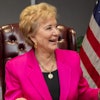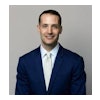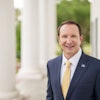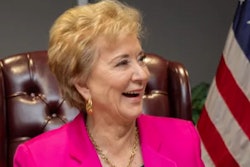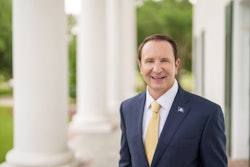SAN FRANCISCO – Howard University president Dr. Sidney Ribeau was initially surprised when, about six months ago, a standing room-only crowd of students packed in the school’s 1,500-seat auditorium for a program promoting study abroad opportunities in China. Because first lady Michelle Obama was the program’s keynote speaker, an amused Ribeau simply reasoned that her appearance was what likely drew such a large turnout.
But he was nearly floored in recent weeks as undergraduates steadily “made their way to my office, looking for funding and support” in order to study in China this summer. While Howard’s MBA program typically sends at least 30 students to China most summers, Ribeau estimated that more than 60 undergraduates—at least one fourth of them freshmen—were clamoring to spend time in the country that is the world’s longest continuous civilization.
“The students said they never thought about going overseas until Mrs. Obama came and talked about it,” Ribeau said.
His remarks came Thursday in a Presidents Symposium examining the internationalization of their institutions during the annual meeting of the National Conference on Race & Ethnicity in American Higher Education. Representing a wide swath of colleges, the presidents and former presidents shared their experiences in launching international programs and activities stemming from their respective commitments to diversity.
While Ribeau half-joked that a spokeswoman such as Obama can lend a magic touch, he and other panelists also emphasized that touting global initiatives shouldn’t fall on the shoulders of just one person.
“Leadership is at every level of the institution,” said Dr. Ding-Jo Currie, chancellor of Coast Community College District. “Successful projects need multiple champions.”
The panelists encouraged college officials attending NCORE to not let seemingly insurmountable financial hurdles prevent them from trying to globalize the curriculum and their campuses, saying that their programs have typically been funded through a mix of grants from foundations, government agencies, professional associations and entities such as Fulbright. “There’s no way we would have the capacity to fund these things ourselves,” Ribeau said, observing that programs often spring from faculty collaborating with their colleagues at institutions in foreign countries.
At Howard, the Ralph J. Bunche International Affairs Center has regularly hosted lectures on economic development, women’s issues, ethnic conflict and democratization, among other issues, Ribeau said. Such lectures have brought to campus a variety of speakers ranging from professors to heads of state.
Dr. Yolanda Moses, former president of City College of New York, cited how an initiative sending CCNY students to study in the Dominican Republic was financed by alumni and local business people. This effort was appreciated particularly by CCNY’s Dominican students, many of whom couldn’t speak Spanish and certainly hadn’t set foot in the country of their ancestors, Moses said.
She sympathized with the limited resources of other urban and minority-serving institutions, noting how “at CCNY, we never had the money to do anything, so we were constantly on our own.” Nonetheless, she said, college officials should “gear up and leverage the resources they do have.”
Currie cautioned educators not to necessarily label overseas programs as service-learning because of the potentially offensive connotation. “Some of our students were going to Africa, and I told them they were going over there to learn and to receive. They would take something away with them, so it was appropriate to consider it experiential learning. If you say ‘service learning,’ it can sound like colonization.”
She said that because 95 percent of CCCD students work part- or full-time while juggling classes, the opportunities to study abroad call for short-term commitments, such as a month. For instance, the more than 30 programs throughout the college district include one that sends students to Mexico to study renewable energy as well as a counterpart that sends automotive students to England. Furthermore, the college district has utilized videoconferencing and other technological tools so that students and faculty can collaborate with peers in Mexico and Canada on projects, giving individuals who have family responsibilities and cannot easily travel abroad to still have worldwide experiences, Currie said.
University of Oregon Dr. Richard Lariviere says that a wildly popular program at his campus allows low-income and other disadvantaged students to get a passport, with the school footing the cost and helping them fill out applications. “It’s remarkable how, once the students have the passport in their hands, they immediately start thinking how they can use it.”

